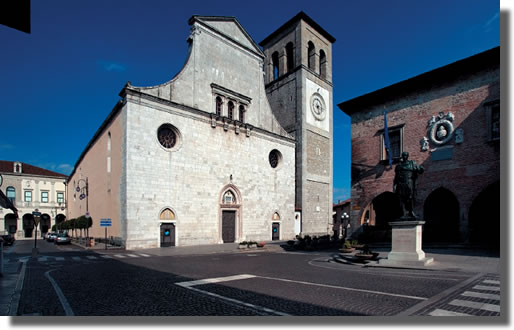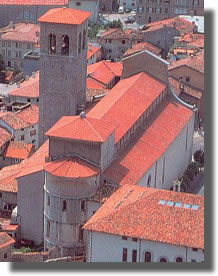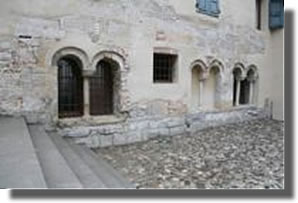CIVIDALE DEL FRIULI
Basilica of S.Maria Assunta
The Basilica of Santa Maria Assunta and the Baptistery of San Giovanni

As shown by the sculptural elements which have come to light in the past, the remains of the religious centre probably date back to the early christian period. This first place of worship was beautified and enlarged by Patriarch Callixtus and its remains are very probably still largely buried under the Duomo, which was built at the beginning of the 16th century.
The complex was characterized by the alignment along a single axis of the Basilica, its atrium, and the Baptistery, a typical trait of the traditions of Aquileia. The only remains investigated are those which can be referred to the Baptistery building, which can be dated between the early christian period and the carolingian period, and which were revealed by the excavations carried out by Ruggero della Torre between 1906 and 1909.


The building had an octagonal plan with an entrance on the eastern side, and probably comprised an apse on the west, where an altar would stand. It can be easily compared to the Baptisteries in Grado, Parenzo, and Castelseprio, which are all datable to the 5th and 6th centuries; it is thus possible that this building was erected around that time, and that Callixtus had been responsible for giving it a monumental appearance, by enriching it with precious liturgical furnishings, including the Tegurium sheltering the baptismal font; probably the Altar of Duke Ratchis was placed there around the same time.

Internal couryard of the Basilica

The “Christian Museum and Duomo’s Treasure” annex to the Basilica
Around the Baptistery other buildings directly linked with the Baptistery were erected, and received mosaic decorations, of which only a fragment of geometric phitomorphic decoration survives.
The Basilica of Santa Maria Assunta was also renovated under Callixtus, as shown by the discovery of liturgical furnishings.
Around it stretched a burial ground, identified in a number of different sightings: in proximity to piazza Duomo (Michele della Torre’s excavations, in 1819), in the area of the sagrato (Ruggero della Torre 1906-1909), and under the former canons’ house (excavations of 1989), and under the Duomo’s sacristies (excavation campaigns 2001- 2002 ) some burials included Longobard type furnishings. The burials discovered in the 2000-2001 campaign supplied interesting information concerning living conditions and pathologies of those buried there.






